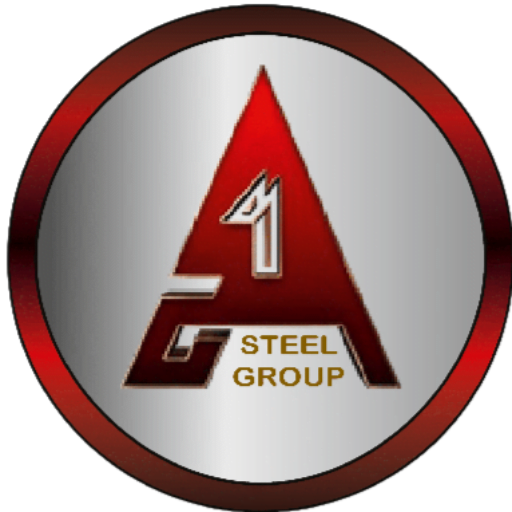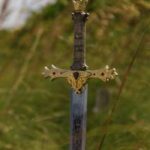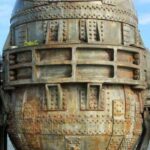Europe was experiencing an iron boom, thanks to the invention of blast furnaces. The hourglass-shaped contraption was 10-feet tall and had two bellows at the bottom on either side.
The ironsmiths of Germany designed the furnace in such a way, so as to allow for large quantities of iron ore and charcoal. Consequently, the hot iron absorbed copious amounts of carbon from the charcoal and transformed into cast iron.
The technique of using blast furnaces to make iron gave birth to what we know today as pig iron. This technique was similar to that of the Chinese, the difference was in the size of the collecting pot, which was larger in the case of the Germans. Trenches on the foundry floor led to a central channel, which allowed the molten iron to flow. The shape of the trenches resembled piglets, hence the molten iron that flowed through them was nicknamed pig iron.
Pig iron greatly helped Europe during the 13th and 14th-century wars, when cannons and firearms were invented, respectively. Pig iron could be easily used in cannon and gun barrel moulds, which led to an exponential demand for iron, and thereafter, an iron boom. However, the worldwide expansion of European powers meant an expansion in the amount of charcoal being used, and in the number of ships being built for transportation. This, in turn, meant increased pressure on timber, a raw material that was used in both charcoal and ships. A book titled, Steel: From Mine to Mill, the Metal That Made America, states that one blast furnace required approximately 240 acres of timber trees annually. As a consequence, the British Empire tapped into the untouched resources of the then New World, and imported smelted iron from America, which disrupted the local iron business.
A cast iron pot maker by the name of Abraham Darby came up with a technique to create thinner pig iron: roasting coal before smelting iron. Coal, being a combustible rock, retained the heat generated from roasting longer than charcoal, which helped the metalworkers create thinner pig iron that could be poured into gun moulds more easily than before. Therefore, England was the first country in the world to discover smelting iron with roasted coal.



